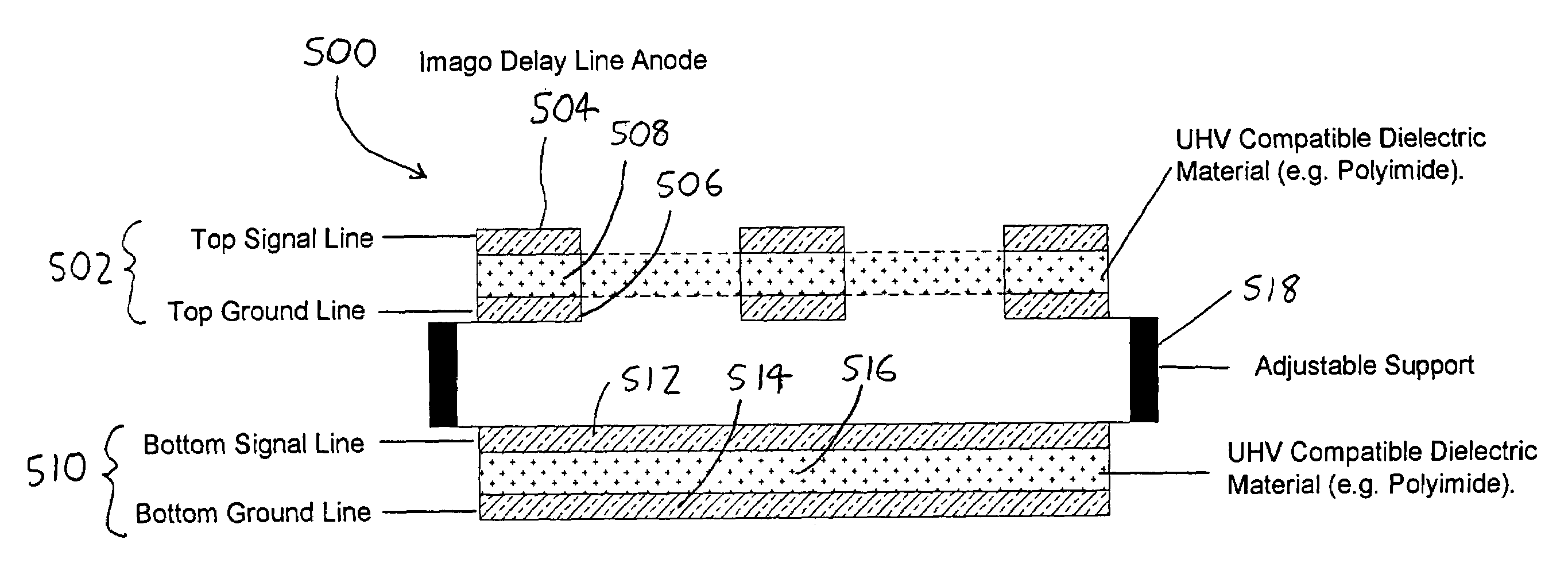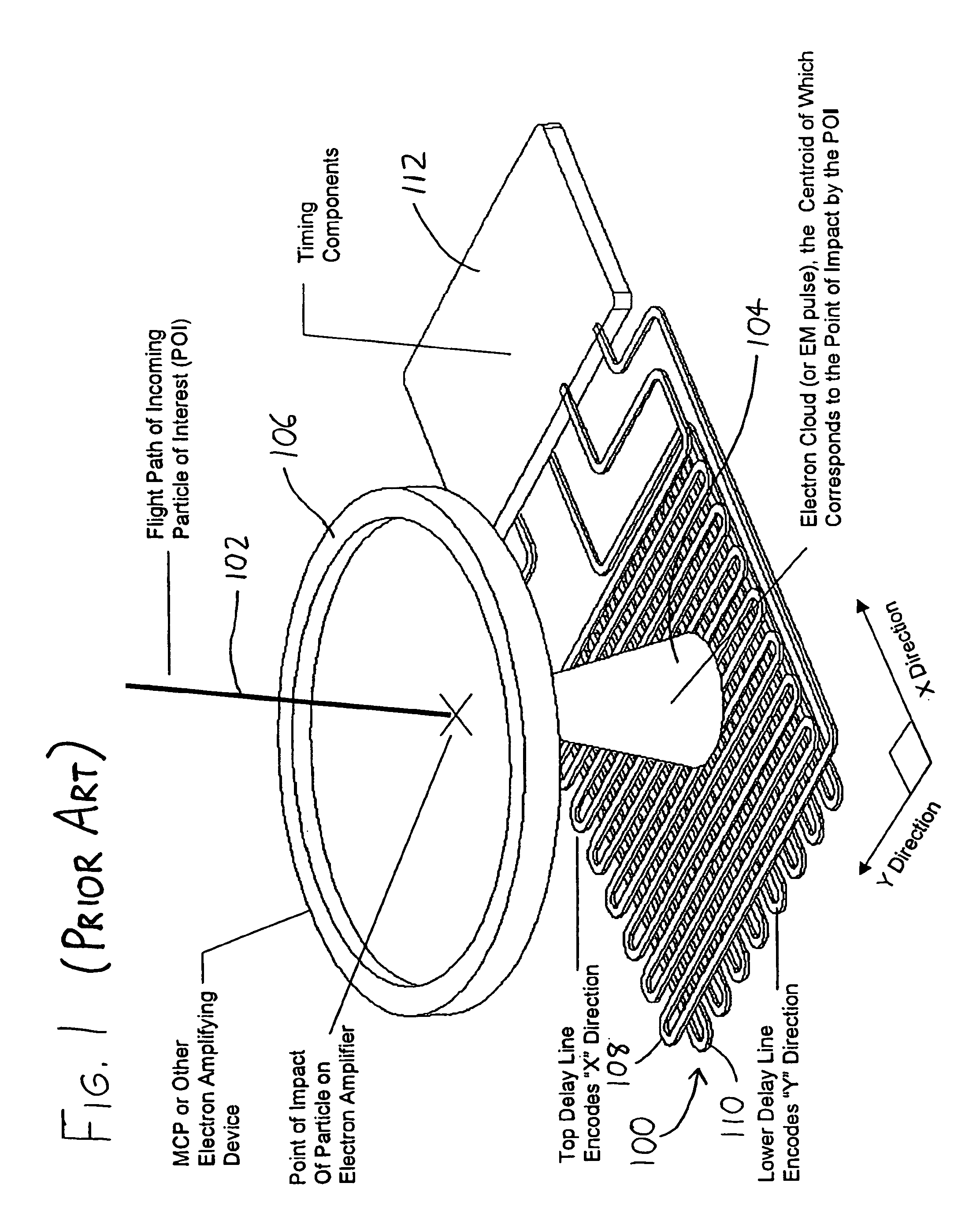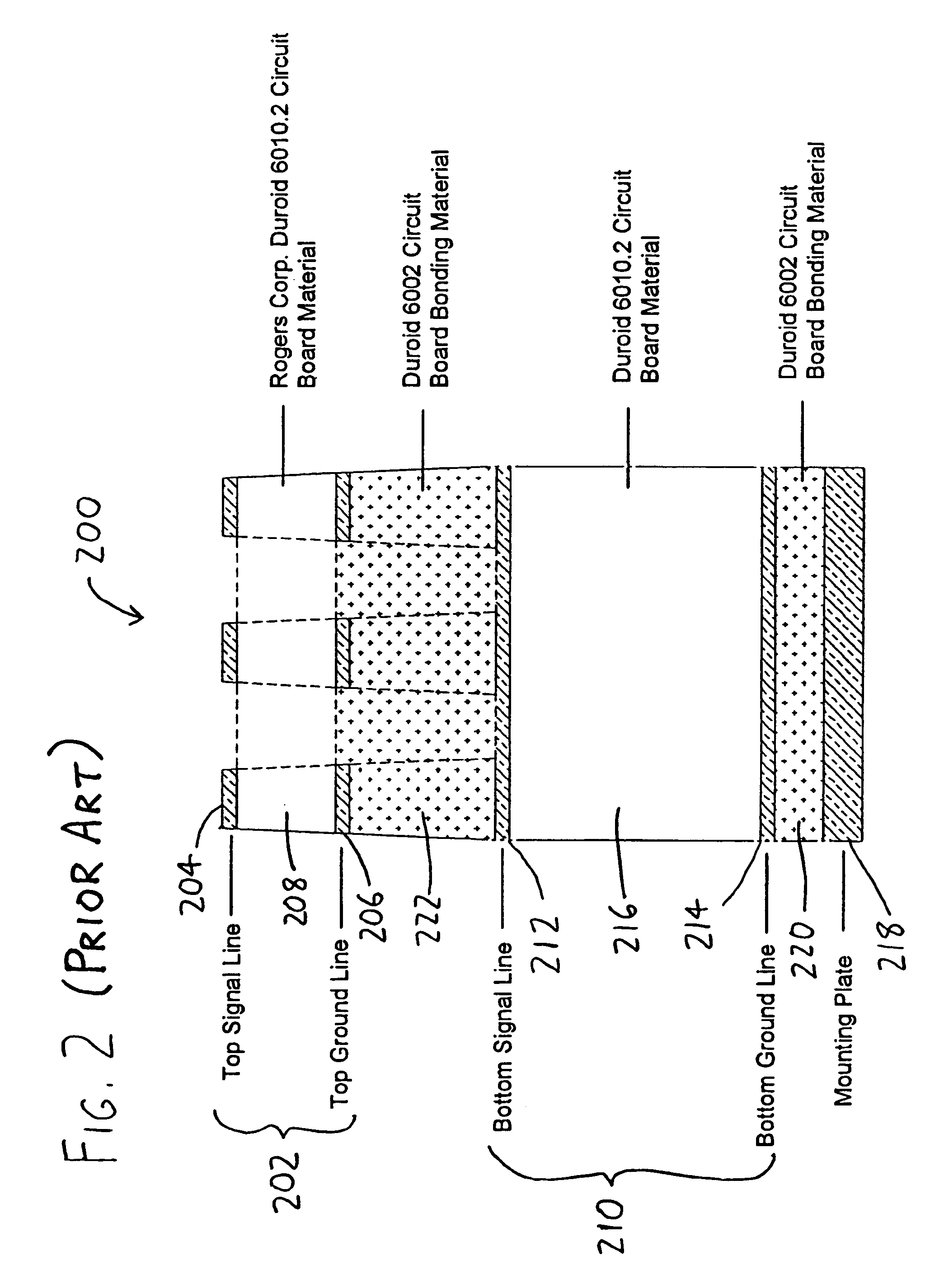Apart from the timing components, the delay line anode can affect
detector accuracy by affecting the size and sharpness of the input EMP into the timing components through attenuation, and also by impedance mismatch between the anode and the timing components.
Impedance mismatch reduces the speed at which the
detector can
record events because mismatch causes reflections of the EMP at the point of mismatch.
Similarly, unless precautions are taken, the reflected EMP may create a spurious timing event at the other end of the delay line.
This
machining is difficult and expensive, particularly owing to the high
aspect ratio (ratio of depth to width)—approximately 4:1 —of the channels of dielectric that are ablated.
The need for deep
cutting significantly heats the board, often resulting in warping and imperfect production unless
cutting is done in
multiple stages, which greatly increases manufacturing time and cost.
Apart from problems with the fabrication method, there are numerous disadvantages with the structural features of anodes made by the foregoing method.
First, the resulting anode array detector is often incompatible with
Ultra High Vacuum (UHV) environments.
The detector is fabricated using standard
printed circuit board techniques and materials, but standard circuit board materials are incompatible with UHV environments due to insufficient temperature stability and
outgassing.
Most typical
printed circuit board materials are stable at temperatures up to approximately 120° C.; however, UHV environments typically require that materials be stable to approximately 150°–200° C. In addition, most adhesives and circuit board materials used in traditional
printed circuit board manufacture continuously release gas, and this is similarly unsuitable for use in UHV environments.
Second, the need to bond the two anodes / boards 202 and 210 together results in undesirable nonuniformity in detector properties.
As a result, the impedance of the lower
signal line 212 will be difficult to accurately control, thus causing problems with
impedance matching to the timing components 112 and other components.
As one might expect, if the upper and lower
signal lines 204 and 212 display different performance characteristics—as they almost inevitably will do—the complexity of the timing components 112 grows and results become more difficult to interpret.
This precludes efficient
mass production of a complete detector
assembly.
Third, the permanence of the bond between the two anodes 204 and 210 is also disadvantageous in that if one anode is found to be defective after bonding to the other anode, the entire detector must be scrapped.
This potentially results in discarding a non-defective anode along with the defective one, thereby increasing losses from wasted time and materials.
Fourth, detector accuracy is partially dependent on alignment of the two delay lines in a known orientation—typically 90°—but the nature of the
bonding process used to bond the upper and lower anodes 202 and 210 together makes precise positional registration between their delay lines difficult to achieve.
Further, since bonding renders the anode alignment permanent, deviations from the desired alignment cannot be corrected after the bonding is completed.
Fifth, the active area of a standard printed circuit board anode (i.e., the area over which the delay line receives particles) is practically limited by the resistance of delay lines having widths achievable with standard printed circuit board fabrication methods, which is typically 60 microns or less.
If delay lines are thinner, more may be fit within any given active area; however, thinner lines have higher electrical resistance, and thus can exhibit undesirable characteristics (in particular higher attenuation).
Sixth, anodes fabricated using standard printed circuit board techniques are generally limited to a planar form.
If it is desirable to have a nonplanar or otherwise irregularly-shaped anode, or an anode with changeable configuration, the foregoing scheme seems inapplicable as a practical matter because the
etching, bonding,
ablation, etc. are difficult to economically perform on non-planar boards.
Seventh, the foregoing fabrication scheme gives rise to limitations in the resulting anode.
Although this scheme eliminates the problems of
laser ablation, the vias add cost and complexity to the fabrication process.
Further, each via adds a capacitive load to the signal line, thus significantly altering its electrical properties (generally decreasing impedance and pulse amplitude, and slowing propagation speed).
Finally, the vias act as miniature antennae between the two
signal lines, increasing
crosstalk between lines and dissipation of the signal, which ultimately decreases the overall performance of the anodes.
To summarize, prior delay line anode fabrication methods are difficult and costly to execute, and they yield multi-anode detectors wherein the component anodes display significantly different electrical characteristics, thereby complicating
electronics and
interconnection issues and ultimately limiting detector performance.
 Login to View More
Login to View More  Login to View More
Login to View More 


